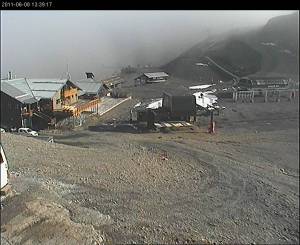Auckland, New Zealand – International arrivals into New Zealand fell by 10 percent during June on the back of air disruptions caused by the Chilean volcanic ash cloud and a late start to the ski and snowboard season.
A total of 131,269 foreign visits arrived in June 2011, compared with 145,825 in June 2010, figures released by Statistics New Zealand show.

In the 12 months leading up to to June 2011, 2,501,303 international visitors arrived in New Zealand which is comparable to the year leading up to June 2010 (2,501,264).
June arrivals fell from key markets including Australia (down 14.9 per cent), U.K. (down 19.1 per cent) and the U.S. (down 9.7 per cent), while China (up 22.5 per cent), Malaysia (up 47.1 per cent) and Singapore (up 18.6 per cent) maintained their growth on the back of increased aviation links. June arrivals from Germany were also up 13.2 per cent.
Tourism New Zealand Chief Executive Kevin Bowler said the decline in arrivals from our top three visitor markets was disappointing but not unexpected.
“Given the Trans-Tasman flight disruption caused by the Chilean ash cloud from June 12 and the late start to our snow season, the Australian figures do not come as a surprise. This year New Zealand’s had more than its fair share of natural events impacting visitor arrivals. However I am optimistic that July will see a return to the levels of growth we have been witnessing in recent months from the Australian market.
“The increased number of visitors from China, Malaysia and Singapore continue to partially offset the declines from U.K. and the U.S., which again reflects the increasing importance of the Asian region,” Bowler added. “Maintaining annual growth from China, Malaysia and Singapore is fundamental to ensuring a positive summer period for our industry, particularly in light of the continued challenging U.S. and U.K. environments.”

